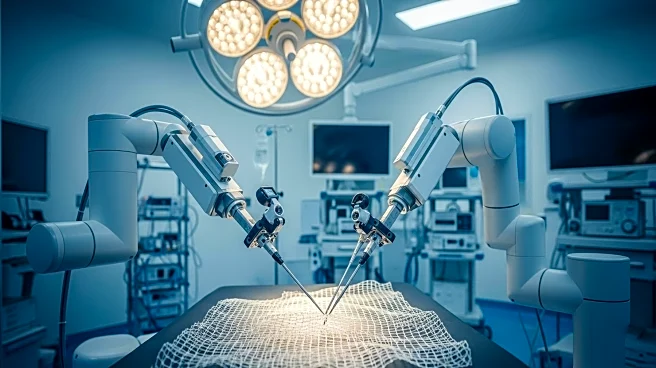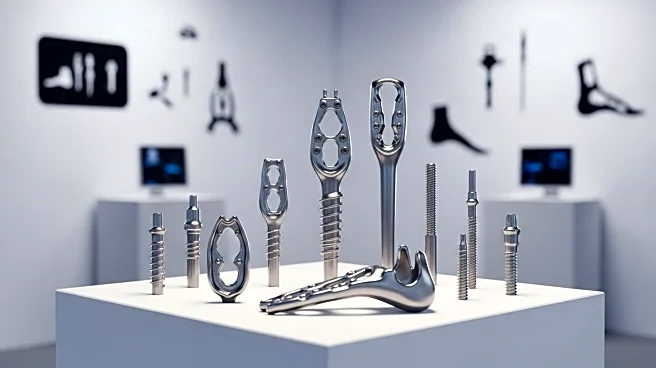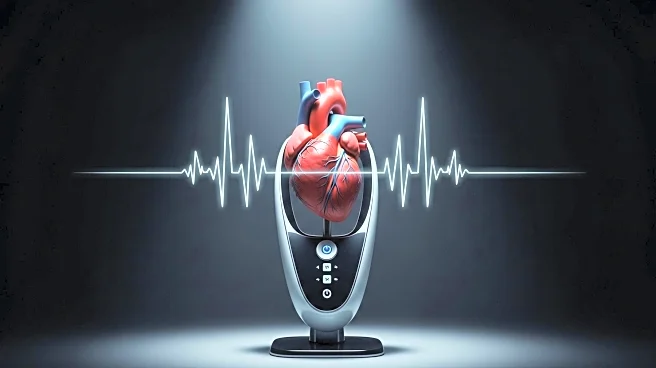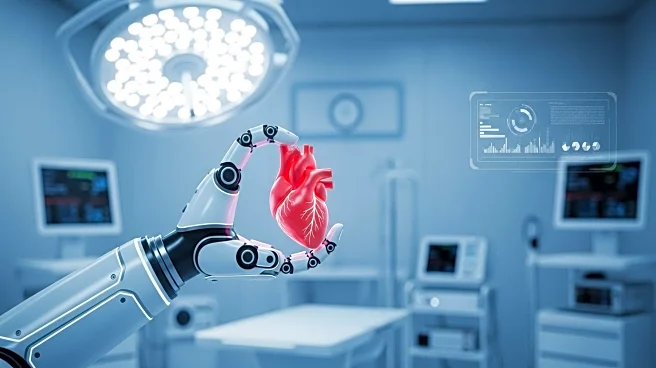What's Happening?
Medtronic has announced that its Hugo robotic-assisted surgery system has successfully met the primary effectiveness and safety endpoints in a clinical trial focused on hernia repair. The trial involved 193 patients undergoing either inguinal or ventral hernia repair, with all surgeries completed successfully. The trial reported a 100% surgical success rate, surpassing the pre-specified 85% performance goal. The Hugo system, designed with a modular approach, allows surgeons to use a variable number of robotic arms, enhancing its versatility across different surgical procedures. Medtronic plans to expand the use of Hugo into hernia repair, following its initial authorization in urology. The company aims to challenge Intuitive Surgical's dominance in the robotic surgery market, particularly in hernia procedures.
Why It's Important?
The success of Medtronic's Hugo system in hernia repair trials represents a significant development in the competitive landscape of robotic-assisted surgeries. By achieving a 100% success rate, Medtronic positions itself as a formidable competitor to Intuitive Surgical, whose da Vinci system currently leads the market. The modular design of Hugo offers flexibility and potential cost savings, which could appeal to healthcare providers looking to optimize surgical outcomes and efficiency. This development could lead to increased adoption of robotic systems in hernia repairs, potentially improving patient outcomes and reducing recovery times. The expansion into hernia repair also aligns with Medtronic's strategy to capture a larger share of the growing market for robotic surgeries.
What's Next?
Medtronic plans to seek regulatory approval to expand the use of the Hugo system for hernia procedures, building on its initial success in urology. The company will likely continue to gather data and refine its system to ensure it meets the needs of surgeons and patients. As Medtronic moves forward, it may face competitive responses from Intuitive Surgical, which could include enhancements to the da Vinci system or strategic partnerships to maintain its market position. The broader adoption of robotic systems like Hugo could also prompt changes in surgical training and hospital infrastructure to accommodate these advanced technologies.











